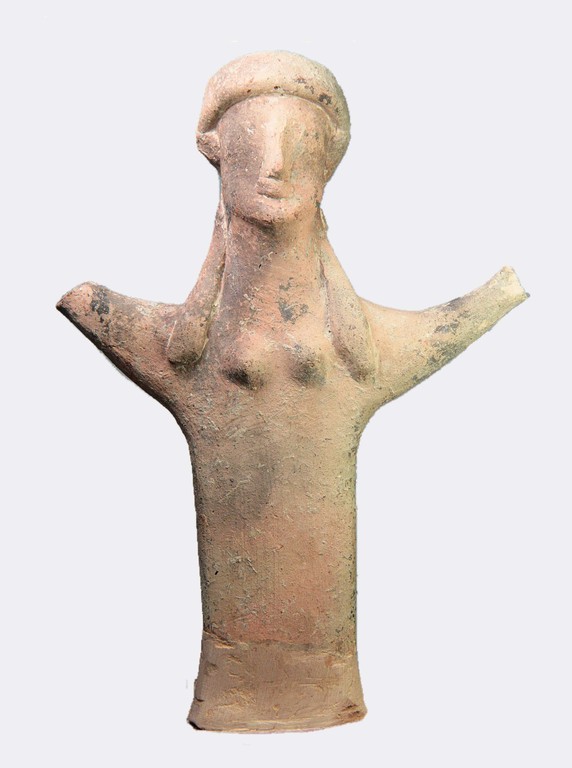Cypriot Larger votive figure with raised arms: Cypro Archaic II (600-480BC)
This type of pottery figure, with raised arms, is particularly characteristic of the Paphos district but spread to other areas. Normally found in open air shrines focussed on an altar, or in bothroi (sacred pits for offerings). The position with raised arms is believed to have been one of prayer and worship (later used by early Christians). The figures with raised arms derive from Cretan Phi figures (named after the Greek letter they resemble) which represented a goddess. They started to be made in the 11th century in Cyprus and probably represented a local goddess (later identified with the Phoenician “Astarte” and then Aphrodite). By the Archaic period when they were mass produced as votive offerings, often with a tall hat usually believed to represent a priest like figure. As a votive offering it stood in for the donor at the shrine. However almost all these figures have a cylindrical body, either of the hollow "snowman" type or a more common, slimmer, solid variety. This flat figure is very rare. Female votive figures have been found in huge numbers, the various types without raised arms often made in moulds with a flat back.
This figure wears a turban-like hat and has long hair hanging down on each side of her breasts. The eyes are not modelled, so were probably painted on, which is why she has been put in this section.
The figure has lost one whole hand and probably the fingers of the other, plus the lower part of the body. The lowest portion is currently a (probably inaccurate) restoration. It should almost certainly be longer and probably not splayed out at the bottom. One flat figure with raised arms ( Cyprus Museum C323) has feet sticking out at the bottom to stabilise it. Another simply ends after a very long body. I may re-restore it differently, or simply take off the restored part and mount it in mid air to indicate the incompleteness. Currently mounted Onan ugly marble display block.
Size: 19.3 x 13.4cm
(Ex private collection, Kent, UK; formerly in a French collection acquired before 1970.)
(Aquired Helios Gallery)
DJ 189. Annex 175

